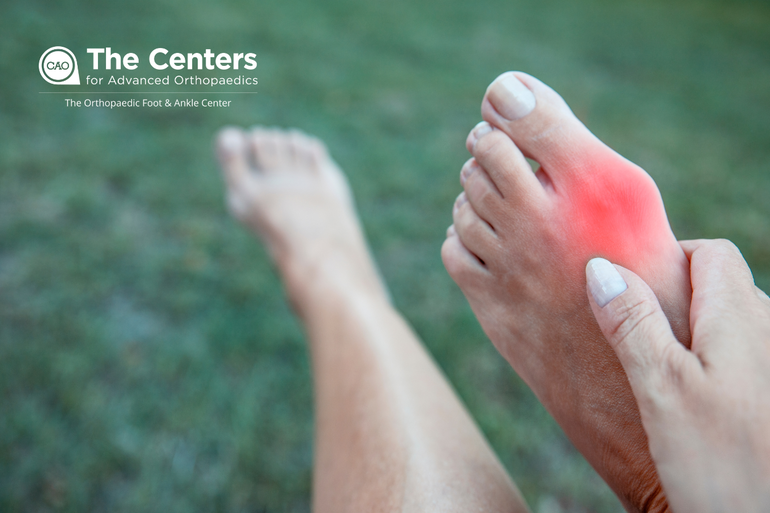The Centers for Advanced Orthopaedics is redefining the way musculoskeletal care is delivered across the region with locations throughout Maryland, DC, Virginia and Pennsylvania.
Lapidus vs. Minimally Invasive Bunion Surgery

At The Orthopaedic Foot & Ankle Center (OFAC), we recognize that a bunion is more than just a cosmetic concern—it represents a complex alignment issue within the bones of the foot, particularly the first metatarsal bone. As this bone malaligns, it causes the big toe to deviate, leading to significant pain and discomfort, often exacerbated by improper footwear.
In this blog, Steven K. Neufeld, MD and Daniel J. Cuttica, DO, OFAC’s foot and ankle orthopedic surgeons, share their extensive expertise. Their insights on the Lapidus procedure and minimally invasive bunion surgery, drawn from a recent detailed video discussion, provide valuable guidance for those considering these bunion correction procedures.
Understanding the Procedures
"Many patients believe they simply have a growth on their foot that needs removal," says Dr. Steven Neufeld, our orthopedic surgeon. "However, the truth is, it's about correcting the malalignment, not just removing the bunion." Over the past decade, our approach to treating bunions has evolved significantly. Dr. Daniel Cuttica explains, "Historically, the solution was to shave off the bump, but this often resulted in a high recurrence rate. Today, we know that proper treatment requires correcting the underlying bone alignment."
One treatment for bunions is the Lapidus procedure. This method involves a fusion that realigns the first metatarsal and secures it in place, aiming to prevent the bunion from recurring. "A Lapidus is not just a simple procedure; it involves making the foot stiffer by fusing the joints. If not done precisely, it can lead to ongoing problems, as there is very little room for error once a joint is fused—it's permanent," Dr. Neufeld adds.
Alternatively, Minimally Invasive Bunion Surgery uses tiny keyhole incisions to correct the alignment without sacrificing joint mobility. "This less invasive approach results in less pain, faster recovery, and reduced risk of complications such as infections or prolonged swelling," states Dr. Cuttica.
Which Procedure Is Right for You?
The choice between a Lapidus procedure and minimally invasive bunion surgery depends on several factors. "Lapidus is generally reserved for patients with severe joint issues, such as arthritis or significant instability," explains Dr. Cuttica. Meanwhile, minimally invasive bunion surgery is suitable for about 90% of our patients, offering a lower risk of recurrence—about 5% compared to traditional methods.
Consult Our Orthopedic Surgeons
At The Orthopaedic Foot & Ankle Center, we pride ourselves on tailoring treatment plans to individual needs, ensuring optimal outcomes for all our patients. "We invite anyone struggling with bunions to discuss their options with us. Each procedure has its advantages, and we are here to help you understand which will best suit your unique situation," concludes Dr. Neufeld.
For more information or to schedule a consultation, please contact us at The Orthopaedic Foot & Ankle Center located in Northern Virginia. Our team is committed to providing you with state-of-the-art care, utilizing the most effective and appropriate treatments for bunion correction.
Watch the full video on Lapidus vs. Minimally Invasive Bunion on YouTube.